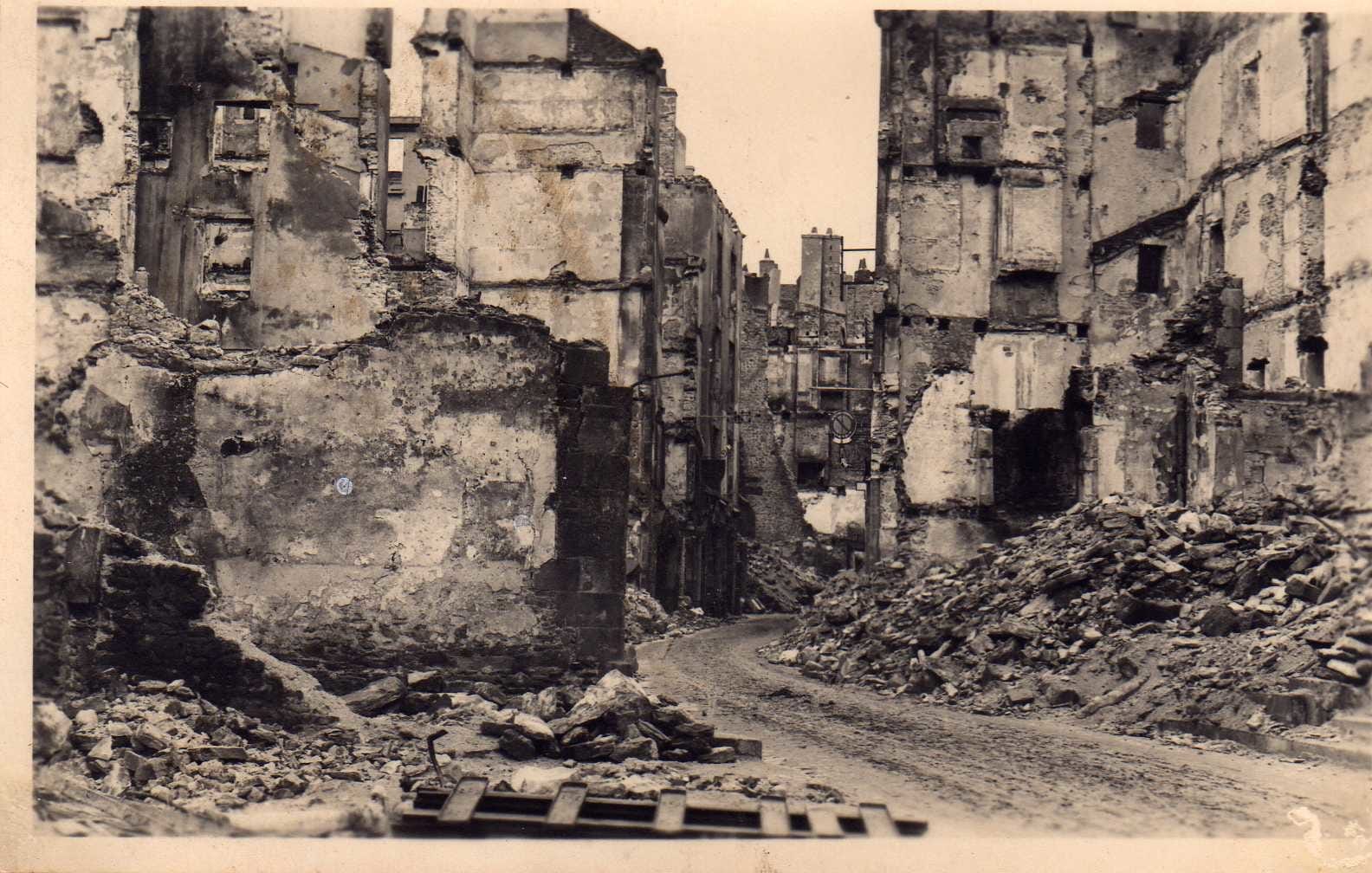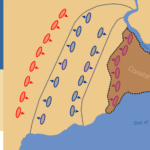A City Transformed: St. Malo in the Grip of War
Imagine the charming, historic port city of St. Malo, France, transformed into a critical battleground during World War II. Its strategic location on the English Channel, with its fortified harbor capable of handling medium-sized ships and a thousand tons of cargo daily, made it a prime target for both the Allies and the Germans. Before the war, St. Malo, with a population of about 13,000, was a popular vacation spot for Parisians, boasting a casino, hotels, and spas. By 1941, however, it had been integrated into Hitler’s formidable Atlantic Wall, bristling with coastal artillery, strengthened defenses, and a substantial German garrison.
The Battle Unfolds: A Month of Struggle
Following the successful D-Day landings in June 1944, Allied forces, primarily the U.S. 83rd Infantry Division (“Thunderbolt Division”), began their advance eastward across France. Recognizing the threat St. Malo posed to their supply lines, Allied planners designated the city a key objective.
On August 4, 1944, Task Force A, an ad hoc American unit, became the first to enter the St. Malo area. The fight for St. Malo had begun. Throughout August, the battle raged, a relentless back-and-forth fueled by heavy artillery fire from both sides. The Allies, determined to liberate the city and its valuable port, unleashed a powerful offensive, supported by relentless naval bombardments. Notably, a British Naval party destroyed St. Malo’s harbor and aerodrome during the fighting.
Despite facing overwhelming firepower, the German garrison, under the command of Colonel Andreas von Aulock, fiercely defended their stronghold. The fighting continued for weeks, a testament to the intensity of the battle and the resilience of both sides.
The human cost of this struggle was significant. St. Malo’s civilian population, trapped in the crossfire, sought refuge wherever they could, including the island fortress of Fort National. The constant bombardments inflicted widespread destruction, reducing much of the historic city to rubble. By the time the German garrison finally surrendered on September 2, 1944, over 80% of St. Malo lay in ruins.
Rising from the Ashes: St. Malo’s Legacy of Resilience
The liberation of St. Malo came at a high price, leaving behind a devastated city and a community forever marked by the horrors of war. Yet, in the face of immense loss, the people of St. Malo, led by their resilient mayor, Guy La Chambre, embarked on a remarkable journey of rebuilding.
Unlike some other heavily bombed cities in France, St. Malo prioritized the preservation of its heritage. Under La Chambre’s guidance, the reconstruction efforts focused on restoring the city’s historic character. While the ramparts and château remained relatively unscathed, painstaking work went into rebuilding the iconic buildings and charming streets, ensuring that St. Malo’s unique identity endured.
Unlocking the Secrets: Why is Saint-Malo Important Today?
Today, St. Malo stands as a powerful symbol of resilience and rebirth. Its beautifully reconstructed streets and bustling harbor belie the devastation it endured. Walking through its charming squares and along its fortified walls, one can’t help but feel a sense of awe at the city’s ability to rise from the ashes.
What draws visitors to St. Malo today is not just its beauty but its multifaceted history. The city’s fame goes beyond its role in World War II. Long before the war, St. Malo was known as a haven for corsairs – privateers operating with the French crown’s approval. These daring sailors, often celebrated locally, embarked on voyages across the globe, capturing enemy ships and amassing wealth for the city. Their legacy is woven into the fabric of St. Malo, adding a layer of adventure and intrigue to its story.
Saint-Malo also holds a special place in French culture. The 12th-century poem “Laüstic” by Marie de France, for example, is a romantic tale set within the city’s very walls. This connection to literature and art continues to this day, with the city attracting artists, writers, and dreamers drawn to its unique blend of history, beauty, and atmosphere.
St. Malo’s fame comes from its ability to embrace its past, even the painful chapters, and use them to forge a new future. It’s a city that invites you to uncover its secrets, to wander its streets, and to reflect on the enduring power of the human spirit.
Why Did the US Bomb St. Malo?: A Strategic Calculation
The decision to bomb St. Malo, while resulting in significant destruction, was a strategic calculation made by the Allies during a critical phase of World War II. To understand the rationale, we must consider the context of the war in the summer of 1944.
With the success of the D-Day landings, the Allies were on the offensive, pushing eastward across France. However, the German military, although weakened, still posed a significant threat. German forces remained entrenched in fortified positions along the coast, including St. Malo. This historic port city, heavily fortified as part of the Atlantic Wall, had become a German stronghold, capable of disrupting Allied supply lines and hindering their advance.
The bombing of St. Malo was not a decision taken lightly. It was part of a larger strategy aimed at:
- Neutralizing the German Garrison: By eliminating the German troops stationed in St. Malo, the Allies aimed to prevent them from harassing supply lines or launching counterattacks that could stall the Allied advance.
- Denying Port Facilities: St. Malo’s harbor facilities were crucial for the Germans. By destroying these facilities, the Allies hoped to cripple the German’s ability to resupply their troops and potentially use the port to launch attacks on Allied shipping.
- Psychological Warfare: The heavy bombardment of St. Malo, like other German-held cities, served as a demonstration of Allied airpower and a means of demoralizing German forces.
The bombing of St. Malo, while undeniably tragic in its destruction and loss of civilian life, must be viewed within the larger context of the war. It was a calculated military decision, made with the ultimate goal of defeating Nazi Germany and liberating Europe. The city’s remarkable recovery and enduring spirit serve as a testament to the resilience of its people and the enduring power of hope, even in the face of unimaginable destruction.
For further information about the history of naval warfare, visit the page about the ships sunk in Pearl Harbour attack for more information. To learn about shipwrecks in the upper peninsula, visit the shipwreck museum upper peninsula.















